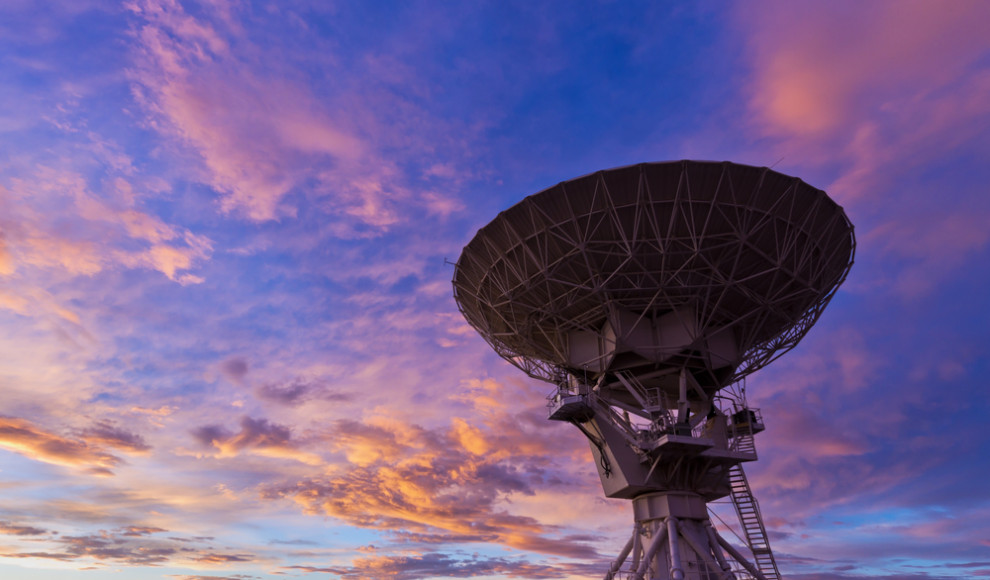Do there exist inhabited worlds other than our own? This question has been posed for millennia: Epicurus, in a letter to Herodotus in 305 BC, posited the existence of other worlds and predicted that they would contain “the seeds out of which animals and plants arise and all the rest of the things we see.” The sixteenth century Dominican friar Giordano Bruno wrote that “there are countless suns and countless earths all rotating round… that are no worse and no less inhabited than our earth.” Thus long before astronomers developed a detailed understanding of stars and the planets of the Solar system, philosophers speculated whether there might exist other worlds and whether we might someday come into contact with them. The answer to this big question has enormous implications: It would inform not just our scientific understanding of the formation of planets and the formation of life upon those planets, but it would directly address the uniqueness of the Earth, and it would impact each individual’s understanding of his or her place in the cosmos.
How exciting, then, that we find ourselves alive at the moment in human history when we have the technological ability to answer the age-old question: Are we alone?
My goal is to show how astronomers approach this question. The search for other life in the universe has yielded new information and benefited from new technology. Those developments, in turn, have generated new approaches. I plan to discuss the reasons water is a key element for life, describe the ways in which improved telescopes have changed our thinking about the existence of potentially inhabited worlds—and where we might find them–and explore the questions we hope to answer in the not-too-distant future.
Follow the water
The quest to find life on other worlds is (almost) always premised on the belief that life requires water, and in a liquid form. Liquid is the only state of matter in which a mixture of atoms and molecules can be present in high enough density for the chemistry of life to flourish: In a solid, each particle is held in place and unable to find other particles to initiate chemical reactions. In a gas, only a small subset of molecular species avoid condensation, and the overall density (and hence the rate of reactions) is far too low. After hydrogen (and the chemically inert helium), the most abundant atoms in our galaxy are oxygen, carbon, and nitrogen. Each of these react readily with hydrogen to form, respectively, water, methane, and ammonia. We certainly could imagine planets with lakes of methane, ammonia, or other molecules. Indeed, Titan, the largest moon of Saturn, has lakes of ethane and methane. Why are astronomers bullish on water?
The argument is largely based on four properties of water that make it special compared to the other options. First, water is liquid at a much warmer temperature (the others would all be in gaseous form on the Earth), and the rate of most chemical reactions is staggeringly temperature dependent (roughly doubling for each modest increase of 10 degrees centigrade). Said differently, lifeforms in lakes of methane would, by necessity, live at very cold temperatures, and all the chemistry of life – including those that set the stage for the first cells, and later for evolution – would proceed at a pace that was painstakingly slow. Second, water is liquid over a much wider range of temperatures. The temperature at a location on a planet changes throughout the year (think seasons), but also over thousands of years (think ice ages). Both timescales are short compared to that of evolution. Thus water offers the best chance that nascent life forms won’t find themselves quickly frozen (or left to dry out as their ocean quickly evaporates). Third, unlike most hydrocarbons such as methane, water is a polar molecule, allowing it to readily dissolve salts, and permitting a natural mechanism to form long-lived membranes (and hence cells). Finally water is peculiar in that its solid form is less dense than its liquid form. A methane ocean on a planet undergoing an ice age would quickly freeze out: Freshly frozen methane would sink to the bottom, exposing the remaining liquid and allowing it to freeze rapidly. Water ice, on the other hand, floats, providing an insulating layer and allowing lifeforms to hunker down in the liquid that is protected below, awaiting the return of warmer days.
To my eye, these are all reasonable arguments as to why we should begin our search with liquid water. I confess a worry that we are blinded by our own terrestrial upbringing, and out there somewhere an alien astronomer is lauding the benefits of methane. But for now astronomers are nearly unanimous in their belief that we should first set out to find planets with liquid surface water.
The need to search outside the Solar system
Life has dramatically altered the appearance of the Earth to would-be alien astronomers: The impressive abundance of molecular oxygen in our atmosphere, and the distinctive green color due to the chlorophyll of our forests make Earth’s life easy to spot from afar.
Several decades of imaging and, in some cases, direct exploration of the other planets of the solar system make it clear that Earth is unique in this respect. On the Earth, life can’t hide its telltale effects, yet no other body in the solar system shows so much as a hint of life’s chemical activity. We know from now-dry riverbeds that water flowed on Mars in the distant past, and maybe life hunkers there yet, but Mars never received the sort of planet-wide makeover that occurred on Earth. Yes, there is liquid water on Jupiter’s moon Europa, but it’s hidden under several miles of ice and locked away from view (and from any light that would permit photosynthesis). The hydrocarbon lakes of Titan may be home to a thriving community of methane lovers, but if so, their chemistry is so obscure and different from ours that we haven’t spotted any telltale signs yet. To us, the chemistry of Titan’s atmosphere indicates only planetary physical (and not biological) processes.
While further exploration of our neighboring worlds within the solar system is surely merited, I think the prospects are much brighter once we look to the population of planets orbiting other stars. We call these distant worlds exoplanets.
The quest for rocky worlds
On March 6, 2009, a rocket lit up the skies of eastern Florida and placed the NASA Kepler satellite safely into orbit. Dozens of ground-based efforts had already established that exoplanets were a commonplace, but these planets were mostly gas giants and unsuitable for life. The promise of Kepler was that it would be the first project with the capability to discover planets that were as small as the Earth. At the moment of launch, we truly didn’t know if such exoplanets existed. Perhaps Kepler would survey its 150,000 stars and inform us that our home planet was unique?
Instead, Kepler told us an astounding fact: Most stars have planets similar in size to the Earth. Our galaxy contains far more planets than it does stars.
Kepler is particularly adept at discovering planets close to their stars, but for the planets to have the possibility of containing liquid water they must lie in the so-called habitable zone: Not too close, lest the water boil; not too far, lest it freeze. Like Goldilocks, we seek planets with orbits that are just the right temperature. For a star like the Sun, finding such planets is difficult: They are so far from their star that they orbit around it only once per year, and completing only a few cycles within the 4-year baseline of the Kepler mission. Moreover, the Sun is enormous compared to the Earth, and we must push the data to its limits to eek out these signals. Still, astronomers have persevered, and the current estimate is that perhaps 10% of Sun-like stars have an Earth-like planet.
Despite what I was told in high school, the Sun is NOT an average star. Most stars are much smaller and emit much less light than the Sun. As a result, these red dwarf stars make it much easier to find Earth analogs: Instead of a one-year orbit, the habitable zone about such a star corresponds to only two weeks (the planet must be tucked in close to receive sufficient energy). Moreover, owing to their small physical size, the contrast between the planet and star isn’t nearly as great. Unlike the case for Sun-like stars, Kepler’s estimate of the rate of occurrence of Earth-like planets around red dwarfs is on much firmer footing: Last year and in subsequent work, Courtney Dressing and I found that 50% of M-dwarfs may have a habitable planet. Since red dwarfs outnumber Sun-like stars by a factor of 10, this implies with near certainly that the closest worlds (and hence the ones most accessible, at least to our telescopes) orbit these tiny little red stars, and not a solar analog. Some of my colleagues have pointed out reasons to think that life would be impossible in orbit around a red dwarf: They are notorious for emitting copious amounts of sterilizing ultraviolet light, and planets in the habitable zone would be so close that the gravity of the star would have locked the planet’s rotation, implied a permanent, scorching dayside and a frigid nightside. These arguments strike me as unduly Earth-centric. We know so little about the beginnings of life on Earth, it seems a shame to not give red dwarfs the benefit of the doubt! More importantly, regardless of the theoretical musings for or against their habitability, the red dwarfs bring an opportunity that we simply can’t afford to miss.
The fast track to an inhabited exoplanet
Now that we know of potentially habitable planets, how can we establish whether they are in fact inhabited? Other stars are simply too far to contemplate space travel, so the prospects for heading off with butterfly nets in hand are dim. The answer lies in studying the exoplanet atmosphere and searching for atmospheric biosignature gases that would point unambiguously to active lifeforms on the surface below.
The prevailing wisdom is that the study of the atmosphere of an alien Earth requires an enormous technology development, ultimately leading to the launch of very large, space-based telescope (much larger than any yet launched). Such a project would take at least 25 years and require at least 5 billion dollars. This may indeed be what is required if we want to study a true Earth-twin, in a one year orbit about a Sun-like star. But does the newly-discovered preponderance of potentially habitable planets orbiting red dwarfs present an alternate path?
A decade ago, I developed a novel method to make the first detection of the atmosphere of an exoplanet, albeit for a decidedly non-Earth-like gas giant. The work came as a surprise to most of the research community, as the prevailing wisdom was that such a study would require a fabulously large and technologically advanced telescope, capable of first taking a picture of the exoplanet separated from the glare of its star. Instead, our team waited for the moment when the planet passed in front of its star (only a small fraction of exoplanets do this). We then used the star as a flashlight: As the light from the star passed through the atmosphere of the planet, imprinted upon it were the features of the atoms and molecules present in the planetary atmosphere. We had transformed the glare of the star from foe to friend.
This method works only if such eclipse events are relatively frequent, and if the star isn’t too much bigger than the planet. Neither is true for Sun-like stars, but indeed both are true for red dwarf stars. Excitingly, the method doesn’t require the construction of a specialty telescope. While studying Earths-like planets in this way can’t be done with current facilities, a number of upcoming telescopes that are already under construction may be powerful enough for this idea to work: These include the NASA James Webb Space Telescope, scheduled for launch in 2018, and the ground-based Giant Magellan Telescope, which should see first light in 2020.
Much work remains to be done: We still need to find closer examples of the population of red-dwarf planets uncovered by Kepler, and we need to take care that the instruments on JWST and GMT are optimized for this work. But it is possible that we could undertake a meaningful study of the atmosphere of a potentially habitable planets within 5 years. The big questions posed by Epicurus, Bruno, and many others may indeed find their answer in the very near future.
Discussion Questions
- Given that any claims of the discovery of life on an exoplanet will be made based on remote sensing with no hope of a direct site visit, what would constitute a compelling level of proof? Will we always be able to concoct alternate, non-biological explanations of our measurements? Can this method unambiguously discover extraterrestrial life?
- Can we search only for life that is extremely similar to life on Earth? Would we fail to recognize the chemistry of alien life from afar?
- What will be the impact of discovering life on other planets, to yourself, to our scientific understanding, and to our society generally? Does this search merit a significant investment of public funds?












You pose interesting questions with scientific as well as theological consequences. Assuming the creation of life is an inherent realistic possibility in our universe (and not a one-off occurrence), then the numbers of earth-like planets orbiting sun-like stars would suggest a high probability that life exists elsewhere. If that life follows a similar trajectory to life on earth, then it will spend an extended period of time in relatively simple single-cell form – so we should be looking for the planetary footprint of such forms in our search.
However, the transition from simple forms to human sentience has taken just a blink of an eye (in a relative sense) – so we are much less likely to observe such a “phase change” in progress elsewhere. Extra-terrestrial civilization, if it exists, will likely either be extinct or technologically far superior. In the latter case – what do we do then? Will they be following Star Fleet’s Prime Directive?
The search is worth the effort – and the consequences of success would be profound. At a minimum, human civilization would experience a new Copernican revolution in understanding our not-so-exclusive relationship to the universe. At the other extreme, we could witness the end of our earthly civilization – either as a transformation to something more advanced or as a termination by a technologically superior life-form.
The FQXi essay contest this year posed the question “How Should We Steer Humanity?” I suggest we need to steer (see: http://swedenborgcenterconcord.org/tip-of-the-spear-earns-a-4th-place-in-fqxi-essay-contest/) as if we are about to experience first contact – arming the tip of the spear with the highest of human empathic qualities, so that we will be on our best behavior when it happens.
You raise several excellent points.
First, let’s discuss probabilities. We know that the Milky Way galaxy contains perhaps 100 billion stars. So, even if life had only a one-in-a-billion chance of taking hold, that would imply 100 inhabited worlds. Beyond this, the observable universe (meaning the fraction of the universe that is sufficiently close that light from it would have reached us within the age of the universe) contains perhaps 100 billion galaxies. So, even if life is rarer than one-in-a-billion, the number of stars is so vast that we could still assert that out there, somethere, there are other inhabited worlds.
However, an important consideration is out to what distance our telescopes could study the atmosphere of the planet and search for the chemical signature of life. As an experimental scientist, there wouldn’t be any real difference between (1) a universe in which we truly were alone, and (2) a universe in which there were other inhabited worlds, but they were sufficiently rare that there wasn’t one close enough to the Earth for us to discover its life. In both cases, the effect would be the same: We would deduce that we were on our own.
In the past year this question has been studied quantitatively by a few astronomers (including Ignas Snellan, at Leiden, and my colleague here at the Harvard-Smithsonian Center for Astrophysics, Mercedes Lopez-Morales). They found that the next generation of large telescopes — including the Giant Magellan Telescope, which I described in the article — could reach out to perhaps 30 light years. This is only a tiny fraction of the Milky way, containing several hundred stars. Moreover, the method requires that we not only find an Earth-like planet, but one that lies in just the right orbit so as to pass in front of its star. Perhaps only one in 50 planets have this orientation. We now know that perhaps half of these stars host a planet like the Earth. Putting all this together mplyies that there are a precious handful of worlds for us to explore (perhaps a dozen or so). Of coure, with time will come more powerful observatories, but for the immediate future, that’s the list we will have.
Life has been present on the Earth for most of its history. So, even if we can explore (telescopically) only a dozen worlds, we would expect to find quite a few with life, if there biological histories were not dissimilar to our own. So, this is a very interesting experiment to undertake. But yes, you are quite correct that the presence of intelligent life on the Earth has been but a brief moment in our cosmic history, and the chance of finding our peers (technologically speaking) is vanishingly small. Perhaps intelligent civilizations do reach an equilibrium and persist in a steady state for hundreds of millions of years, but this doesn’t appear to be the path on Earth.
As to what this implies for the choices we might make, perhaps we are simply too driven by our own curiosity to do anything other than explore, even if (as you note), this brings risk of meeting a vastly more advanced and more powerful civilization. Encounters between previously isolated groups have occurred before on the Earth, and in most cases one group suffered terribly. But, even given this risk, is it in our nature to not search?
David – Yes, we are human, so search on, search on, by all means. But it would be good to do it with eyes wide open….. Are these issues being discussed among the community of searchers? I suspect – not so much. There seems a tendancy for compartmentalism in science. It is easy and exciting to focus on a detailed area of study without, perhaps, stepping back to think about possible consequences. This does seem to be human nature.
George — indeed, I agree with what you wrote: There is essentially no real effort to consider the consequences should life, particularly intelligent life, be discovered on other planets. My feeling is that largely we would be caught completely off guard!
Ahh, thanks, David. In which case – I will hope you find them before they find us. 🙂
Interesting article in that we find both a significant conviction there is life and humans elsewhere in the cosmos but also theoretical and experimental efforts which are going into their possibilities and cosmic whereabouts. First to what extent does the public realise this state of the art for extraterrestrials. On the realities of how scientifically we can endeavour to substantiate that indeed there is life and humankind elsewhere would have most probably to continue to focus on the kind of astronomy described by David Carbonneau. Sending communication probes blindly into the cosmos with the hope that our messages would prompt a communication response can be possible but when is not known at all. Actually sending a vehicle of any kind that will eventually reach an extraterrestrial human species is also a good effort whose consequence is not known with any certainty. Travelling at near the speed of light is not fast enough and it is simply not possible to exceed the speed of light. The occurrence of wormholes however exciting that possibility is, is very unlikely for GR might in its final reality a mathematical model which can produce excellent mathematical data like the precession of Mercury but in terms of the physical realities of GR we are not sure about anything like what exactly is gravitation, time and even spacetime and how these originated at the time of the origin of the universe. We may however make some useful progress in the years to come. But there are also the religious views about extraterrestrials which can be good inspiration to those who conduct research on them.
Recently a survey about extraterrestrials was published in the Physicsworld newswire of October 2 which reported in an article the following data amongst others about extraterrestrials:
“More than half (55%) of the atheists in the poll professed a belief in extraterrestrials, compared with 44% of Muslims, 37% of Jews, 36% of Hindus and just 32% of Christians.”
My comment included the following remarks:
Clearly most Muslims amongst the sample in this survey do not know what the Quran says about extraterrestrial life.
Qur’an Chapter 40 Verse 57
“The creation of the heavens and the earth is definitely a greater thing
than creation of mankind, however, most of mankind knows not.”
Quran Chapter 65 verse 12
“God it is who has created seven heavens, and similar number of earths, The commandments come down among them slowly,
that you may know that God is Able to do all things, And that God surrounds all things in knowledge”
( The word seven is used in the Quran to denote a very large number more like infinite.)
This Templeton article now emphasizes the importance of water in the origin of life and in that respect too this is what the Quran has to say about it:
“Do not the Unbelievers see that the heavens and the earth were joined together (as one unit of creation), before we clove them asunder? We made from water every living thing.” [Quran 21:30]
“It is He Who has created man from water: then has He established relationships of lineage and marriage: for thy Lord has power (over all things).”
[Quran 25:54]
“And God has created every animal from water: of them there are some that creep on their bellies; some that walk on two legs; and some that walk on four. God creates what He wills for verily God has power over all things.”
[Quran 24:45]
I have a paper accepted for publication on the relation of science to philosophy and I know about what religions say about cosmology. Referring to the quote below from the present Physicsworld article:
“More than half (55%) of the atheists in the poll professed a belief in extraterrestrials, compared with 44% of Muslims, 37% of Jews, 36% of Hindus and just 32% of Christians.”
clearly most muslims amongst the sample in this survey do not know about what the Quran says about extraterrestrial life.
Qur’an Chapter 40 Verse 57
The creation of the heavens and the earth is definitely a greater thing
than creation of mankind, however, most of mankind knows not.
Quran Chapter 65 verse 12
God it is who has created seven heavens, and similar number of earths, The commandments come down among them slowly,
that you may know that God is Able to do all things, And that God surrounds all things in knowledge
( The word seven is used in following verses in the Quran to denote a very large number more like infinite.)
“Would we fail to recognize the chemistry of alien life from afar?”
Maybe not. Here is why:
The coding regions of DNA contain massive quantities of functionally complex, digitally stored, symbolically represented, precise information:
– Functionally complex information: It is essentially the assembly instructions for intricate protein machines used by the cell for metabolism and reproduction.
– Digitally stored information: Just as in computer memory, only in DNA memory base 4 is used instead of binary. One of four nucleotide bases (abbreviated A, C, G and T) is contained in each unit of memory, as opposed to a “zero” or “one” in computer memory. Base 4 allows for very densely packed information. For example, in binary, 16 units of memory can contain 65,536 possible values. In base four, 16 units of memory can contain 4,294,967,296 possible values.
– Symbolically represented information: In computer memory each letter of the English alphabet is represented by a unique series of seven 0 and 1 memory unit values (ASCII). DNA uses a twenty character amino acid alphabet where each “letter” is represented by a series of three A,C,G and T values (a codon). There is also punctuation; there are codons for “stop.”
– Precise information: With the English alphabet, there are a virtually infinite number of ways to arrange its letters that will be meaningless gibberish, and relative to that an infinitesimally small number of ways to arrange those letters such that they comprise a meaningful composition. So it is with the amino acid alphabet: The contents of the coding regions of DNA are as likely to be gibberish as the mindless arrangement of the letters of the English alphabet, yet its contents are a composition specifying the assembly instructions for intricate cellular machinery.
If alien life had the same designer as life on Earth, we should be able to recognize similar design patterns at the microscopic level, even if macroscopically alien life appears to be very different.
Oh. The question was not about examining alien life that had come from afar (like finding and bringing back some strange bacteria from Mars), but examining alien life from far away. Sorry.
Harry, thanks for your thoughtful comments about recognizing alien life. Indeed, herein lies a very large division betweens searching for extraterrestrials WITHIN the solar system, and searching for them OUTSIDE the solar system. Within the solar system, you are quite right that we can undertake detailed investigations to see, for example, if there is DNA. Such studies have been contemplated on Mars in situ, i.e. a lander would deploy a prepackaed experiment to attempt to amplify any extant RNA/DNA (we may first need to replicate it to increase the quantity to a measurable level) and then study it. And there is also the very real possibility of undertaking a sample return mission, in which a lander gathers a collection of material (presumably soil) and then launches to return it to the Earth. We haven’t tried to do this yet for other solar system planets (the large gravitational field is a challenge), but sample return missions have been done successfully for small bodies in the solar system (mostly robotically, with the notable exception of the Apollo MIssions to the moon). So, your arguments about the complexity of DNA/RNA hold true here and indeed many planetary scientists would equate the search for extraterrestrial life with the study of sample return material.
Indeed, one may worry that the idea I presented in the article, namely the remote, telescopic detection of life only by indirect evidence (interpretation of the molecules we detect in an exoplanet atmosphere) may ultimately be doomed to failure: Perhaps we can always talk ourselves out of a promising atmospheric biosignature gas, explaining it away as due to some novel geological process. In that case, perhaps our true discovery space is indeed only the solar system, and its rather limited array of planets.
Thanks for your thoughtful reply.
A question:
If we discovered what appeared to be life on another planet and brought it back to Earth for analysis, where we observed that this strange “stuff” also had metabolism based on cellular machinery constructed according to instructions comprised of a twenty character alphabet, maybe not an amino acid alphabet, but some kind of chemical alphabet, and the “letters” were digitially stored in base 4 in some kind of biological memory device, as it is in DNA on planet Earth, what should we conclude from finding that life somehow assembled itself from inaminate matter, once again using the materials made available by the environment, however different from what is available on Earth, but the same design was used nonetheless?
In answer to your question, my first response would be that this would be the greatest scientific discovery of all time! If we had proof that alien life not only existed but had a strangely familiar means of storing the genetic information of life, I think it would lead to enormouse amounts of novel research into biochemistry , and origins of life. Unfortunately, this level of detailed information is indeed very likely beyond what we can aspire to in the coming decades, as it is difficult to imagine how it could be conveyed though the information in light that we can study with our telescopes.
“Unfortunately, this level of detailed information is indeed very likely beyond what we can aspire to in the coming decades, as it is difficult to imagine how it could be conveyed though the information in light that we can study with our telescopes.”
Right. I find it hard to imagine how the existence of life could ever be determined with any certainty via the information in light received through telescopes. The interpretation of that meager amount of information, in terms of its indicating whethor or not life exists, will remain fanciful speculation for a long time. Humanity may become extinct without our ever knowing for sure if there is life outside our solar system. Outer space is just too big and too spread out to learn very much about what’s out there in any detail, although we do now know that the Universe is much larger than anybody had previously imagined, and that it did indeed have a beginning.
The study of deep inner space has been much more productive, but the implications of the astounding discoveries of modern science in this regard have been largely ignored by the public because they were first ignored by contemporary science. I mean the implications of the fact that even the simplest single-celled, reproducing life forms were found to consist of ultra-sophisticated, digital information based nanotechnology far beyond our own.
It is amusing to me that everyone will immediately agree with the archaeologist that the stone he has uncovered with an etching of a man in the middle of it is the product of intelligent design, not a very peculiar instance of mindless erosion, but many of the same people will insist that the first actual instance of a man, not a simple etching of one, was a mindless accident. Go figure.
I certainly don’t think we are ever going to get close enough to extra-terrestrial life to examine its DNA – unless it comes to us, but it would presumably have to be a very simple form of life that could conceivably remain dormant but intact for perhaps millions of years as it crosses space. Note also that claims of having discovered such extraterrestrial life have already been made – albeit somewhat unconvincingly. On the other hand perhaps the point of our search might turn out to be to find viable candidates for us to aim interstellar pods containing such seeds from earth in order to propagate life throughout our tiny corner of the galaxy before our own (eventual but probably inevitable) demise.
From a technical point of view though, is there any way other than spectroscopy that we might be able to detect the signs of life from afar? If we were to point a telescope such as the ones you anticipate at the earth from 30ly what would we see? I guess not very much. Would we even be able to detect the earth at all from that distance?
And from an ethical point of view, suppose there is a ET Kepler Mission pointed at us from there, would they have discovered the earth yet? And suppose they are already contemplating what I have suggested above. Suppose extra-terrestrial bacteria are already winging their way towards one of their best “candidates” for a habitable planet in the goldilocks zone of a star know to us as the sun in a last ditch effort to propagate life before time runs out for life on their own dying planet?
So I guess you are right – search we must. But what, if anything should we or could we do with what we learn. I suppose time will tell.
Siti — let me pick up on the very insightful comment you made regarding aliens that would be able to detect the Earth. Indeed, an ET Kepler Mission could detect the Earth, and what is more interesting is that we already know the stars to which we would betray our presence. These are the stars that lie in or near the ecliptic plane, the plane defined by the orbit of the Earth about the Sun: Recall that the Kepler Mission detects planets by the small eclipses they make in front of their stars, and so for an ET Kepler to work, we would have to pass in front of the Sun from the alien perspective.
Some astronomers have argued we should beam a message to those stars, since they would have already deduced the exisence of our planet (but perhaps they don’t know whether or not Earth is inhabited). The Search for Extraterrestrial Intelligence (SETI) is certainly aware of the idea that only stars near the ecliptic plane could discover the Earth with a Kepler-like telescope, and I believe they may have already decided to listen to many of those systems in the event that those aliens have decided to beam a message to get our attention. (SETI is a listening post, not a lighthouse, i.e. they aren’t broadcasting our presence.)
As to the implications of such discoveries, my view is we haven’t yet come up with the great scientific questions that we will ultimately ask. Despite our sense of creativity, my experience is that we only come up with new methods and new questions in the wake of big discoveries that open a new view.
The point of my diversion into hypothetical “what ifs” in regard to alien intelligence spotting earth from afar was to move the discussion towards the ethical consequences – not so much of finding life elsewhere, but of confirming the existence of potentially habitable planets. We may (perhaps) be on the verge of being able to do this but we are probably at least decades off from the ability to confirm the actual existence of life on them. Perhaps there may even be a century or two between. And a century or so from now may see the earth and its life facing a very different future even than we currently anticipate. Two centuries ago, special creation was the preferred explanation for life even for the majority of scientists. With what we already know, could we really face the possibility of the only known (to us) outpost of life in the universe grinding to a halt and not at least try to do what we can to give it a second chance? But then potentially habitable could, given our current state of relative ignorance, equate to possibly inhabited. Would we really want to run the risk of possibly obliterating an already viable living planet? On the other hand, I suspect the odds are against the earth’s evolution having been repeated at such close quarters and it is very much more likely that any extra-terrestrial life would be much more distant. The search for extraterrestrial life is certainly a big question. But the moral questions about what we might do if we find it – or if we don’t – are perhaps bigger still. The western world did not do terribly well in anticipating the consequences of their conquest of the rest of the earth. I hope we are better informed and prepared when we finally manage to step off it.
Indeed, we have not done a good job caring for our planet, and their exists the very real possibility that at some point in the future we have done to much damage to ever reverse course. But as to your idea of other potentially habitable planets providing an Earth 2.0 to which we could escape, or at least send some forms of life, the vastness of space makes this extremely technologically challenging. Current estimates of travel time to the closest stars using technology we could imagine constructing still come in in the vicinity of 10,000 years. It is conceivable that with novel technology this will change radically, but for now direct travel between planets orbiting different stars truly is the realm of science fiction (although very interesting science fiction, of course!)
Thanks David – I know we are not going to escape to any earth 2.0, unless it was Mars (re-?)vitalised (which comment is meant to convey the sense of how little we know about even our nearest celestial neighbours rather than a sci-fi-based speculation). I seriously doubt we could ever conquer the vastness of space that restricts interstellar travel within the lifetime of our species. But then again, we once thought that about crossing the vastness of the Pacific Ocean or plunging more than a few meters into its abyssal depths would be forever beyond our capacity. But I am not sure that propelling a small life-containing or even (perhaps more likely) a pre-biotic “life starter kit” (some appropriate set of key autocatalytic molecular stuff that might survive a few hundred millenia of space travel intact) will prove to be forever beyond us. Faced with the tyranny of distance and the ravages of time in an evolving terrestrial ecosystem that we are making ourselves increasingly inimical to, would we seriously be content to watch our own planet die just when we are reaching a point at which we might, just might, be able to do something to at least try and give life a second chance? And if not, in the face of the tyranny of distance and the ravages of time…etc. (going back to my previous question) what difference could it possibly make to us to discover that there are potentially habitable planets so far away that we will never know whether life (let alone intelligent life) has really fluorished there or not. Is it just an ultimately futile attempt to sate our insatiable curiosity? I doubt that we can help ourselves though. We simply have to keep looking. I just think it behooves us to learn from past mistakes and prepare ourselves in advance for what we might find and how we might respond to it. Confirming the existence of potentially habitable planets might not be far off. What we do about it will then become a more pressing question at least in terms of how future research is directed I think. And I do think there needs to be a reasonably broad perspective in order to define the boundaries. I don’t think we should leave open the possibility of a repeat of our “conquest” of the “New World” or our “conquest” of the sub-atomic world as we finally embark on our first steps towards the “conquest” of the extra-solar space.